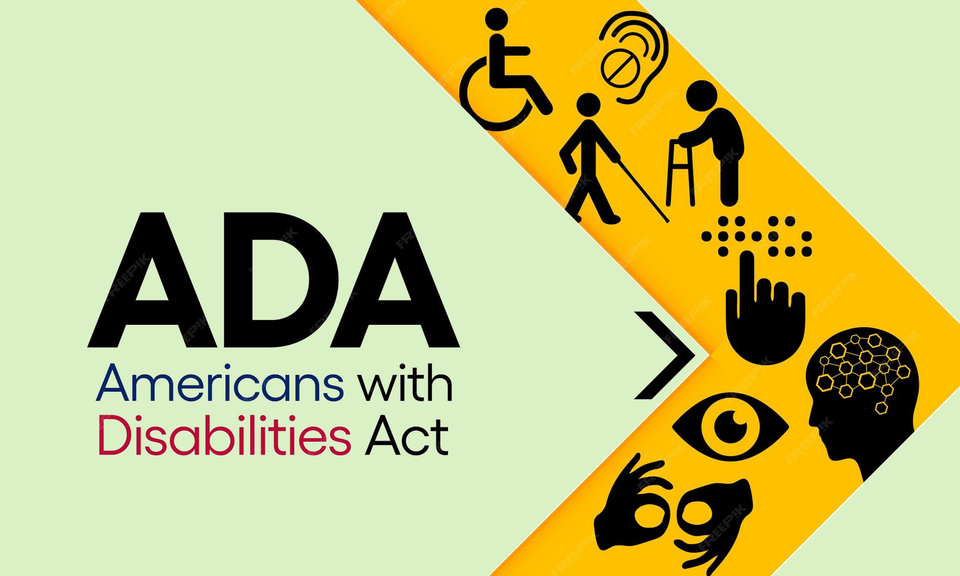ADA Website Non-Compliance: Why Even an Honest Mistake Can Lead to a Lawsuit
Many business owners are shocked to discover that you can be sued for ADA non-compliance even if you didn’t know your site was inaccessible. The law does not just target bad actors who ignore accessibility entirely, it also applies to honest mistakes.

In today’s online world, your website is more than just a storefront or information hub, it’s part of your public space. And just like a physical location must be accessible to all visitors, your website is expected to meet the same standard.
Many business owners are shocked to discover that you can be sued for ADA non-compliance even if you didn’t know your site was inaccessible. The law does not just target bad actors who ignore accessibility entirely, it also applies to honest mistakes.
Let’s break down why these lawsuits are on the rise, what counts as non-compliance, and how you can protect your business.
ADA Website Lawsuits Are Increasing Every Year
Website accessibility lawsuits have climbed steadily over the past decade. In the U.S., thousands of cases are filed each year against businesses of all sizes. Some are high-profile suits against national brands. Many others quietly settle with small companies who never thought they’d be targeted.
The trend is clear, accessibility is no longer a “nice to have.” Regulators and consumers expect businesses to treat digital access the same way they treat wheelchair ramps and accessible restrooms.
What Counts as Website ADA Non-Compliance?
ADA non-compliance means your site fails to give equal access to people with disabilities. Courts have interpreted the Americans with Disabilities Act to apply to websites, especially if you sell products, provide services, or offer public information online.
Most companies look to the Web Content Accessibility Guidelines (WCAG) for direction. Common violations include:
- Images without alt text
- Color combinations that fail contrast requirements
- Forms that can’t be used with a keyboard
- Menus or navigation that screen readers can’t follow
Even if you’ve never intentionally excluded anyone, these oversights can still put your business in violation.
Yes — You Can Be Sued Even if It Was Unintentional
Under ADA rules, intent does not matter. The law focuses on the outcome, whether a person with a disability was denied equal access. If your website is missing accessibility features, you can be held liable, whether you built the site yourself or hired a developer.
For example, imagine a visually impaired customer trying to buy a product on your site. If the checkout button is not labeled for screen readers, they might not be able to complete the purchase. That single barrier could be enough for a lawsuit.
Potential Penalties for Non-Compliance
The most common result of a website ADA lawsuit is a settlement that includes:
- Paying the plaintiff’s legal fees
- Covering your own legal defense
- Funding accessibility fixes
- Implementing ongoing monitoring requirements
On top of the financial hit, there’s the damage to your brand’s reputation. Customers today value inclusion and they notice when companies fall short.
Industries That See the Most Accessibility Lawsuits
Any public-facing business can be targeted, but some industries are more at risk:
- E-commerce stores: Every product image, description, and checkout step must be accessible
- Healthcare providers: Patients depend on accessible portals for forms, appointments, and information
- Financial services: Secure, accessible account management is critical
- Education: Students must be able to access resources and course content online
Even small local businesses are not immune, in fact, many lawsuits target smaller companies that assume they’re “too small” to be noticed.
How to Reduce Your ADA Lawsuit Risk
A proactive approach can save you from costly legal trouble. Start with:
- Conducting an Accessibility Audit — Use both automated scanning tools and manual tests with screen readers.
- Fixing Priority Issues — Address missing alt text, improve contrast, and make sure all forms and buttons work with a keyboard.
- Publishing an Accessibility Statement — Show users you’re committed to inclusion.
- Building Accessibility Into Your Workflow — Treat it as an ongoing process, not a one-time fix.
When to Bring in Expert Help
While automated tools can catch the basics, a full compliance strategy often requires deeper technical work. Accessibility specialists can:
- Audit your site against WCAG standards
- Fix issues at the code level
- Train your team to maintain compliance
- Monitor your site for future updates that could introduce barriers
Bringing in help early can be far cheaper than reacting to a lawsuit.
Final Thoughts — Protecting Your Business and Your Customers
ADA compliance is not just about avoiding fines or lawsuits. It’s about creating an equal online experience for everyone, something your customers will remember and value.
If you have hundreds or thousands of images, adding alt text manually can feel impossible. That’s where tools like AltTextify can help by generating accurate, accessible image descriptions at scale. It’s a quick win that reduces your legal risk and improves your site for every visitor.
Accessibility is not a legal box to check, it’s part of building a modern, trusted brand.
Boost Website Accessibility in Minutes
Start using AltTextify.net to automatically generate compliant alt text and meet ADA, AODA, EAA, CAG 2.1, and Section 508 standards.
Free Trial



